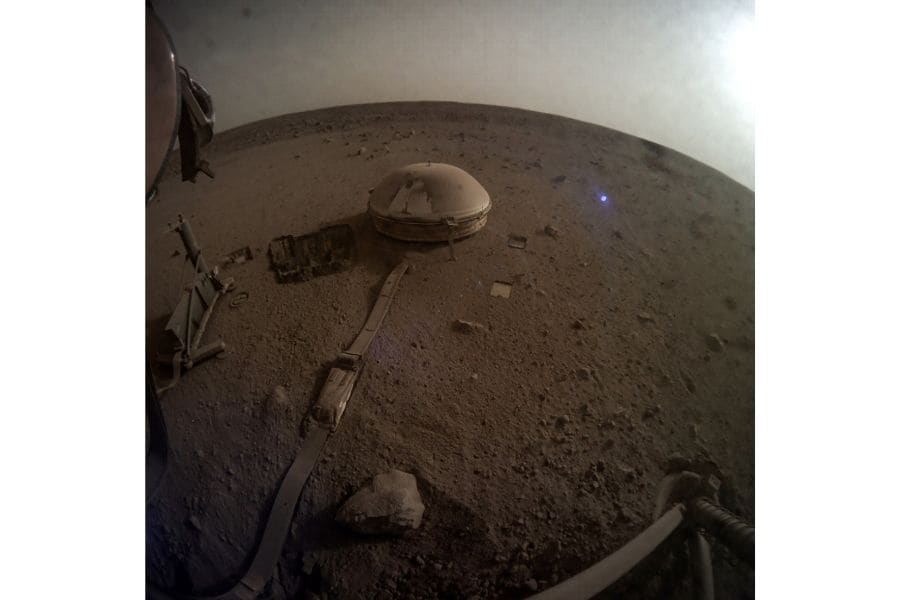
NASA's Marsquake mission is nearing its end
InSight, a stationary robotic probe on Mars, has been steadily growing weaker as dust accumulates on its solar panels. Mission managers predict that by late summer it will not have enough energy to continue operating its instruments and that by the end of the year it will fall silent
 A photo provided by NASA and JPL-Caltech shows the area in front of the InSight Mars lander on Monday, May 16, 2022. The stationary robotic probe on Mars has been steadily growing weaker as dust accumulates on its solar panels. Image: NASA/JPL-Caltech via The New York Times
A photo provided by NASA and JPL-Caltech shows the area in front of the InSight Mars lander on Monday, May 16, 2022. The stationary robotic probe on Mars has been steadily growing weaker as dust accumulates on its solar panels. Image: NASA/JPL-Caltech via The New York Times
NASA’s InSight spacecraft is not quite dead yet.
But InSight, a stationary robotic probe on Mars, has been steadily growing weaker as dust accumulates on its solar panels. Mission managers predict that by late summer it will not have enough energy to continue operating its instruments and that by the end of the year it will fall silent.
“That’s just due to the lack of energy,” Kathya Zamora Garcia, the mission’s deputy project scientist, said during a news conference Tuesday.
The spacecraft could prove lucky if a dust devil — a miniature whirlwind swirling along the Martian landscape — passes over and blows the dust off the solar panels. Although several thousand dust devils have been detected in the area, none has helpfully cleaned InSight.
“We’re not too hopeful given that it’s been 3 1/2 years and we haven’t seen one yet,” said Bruce Banerdt, InSight’s principal investigator, “but it could still happen.”
©2019 New York Times News Service




